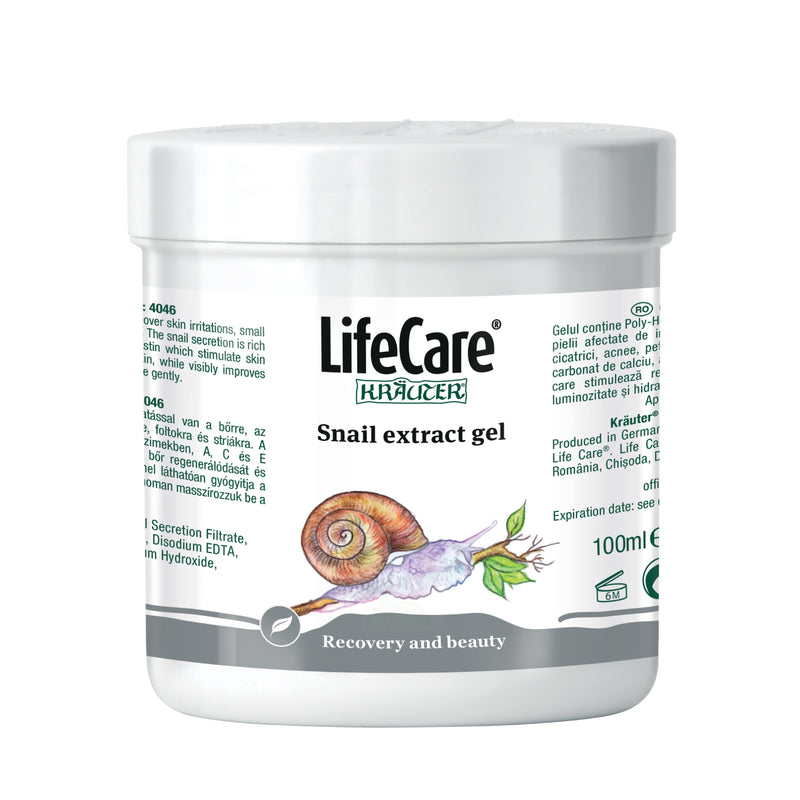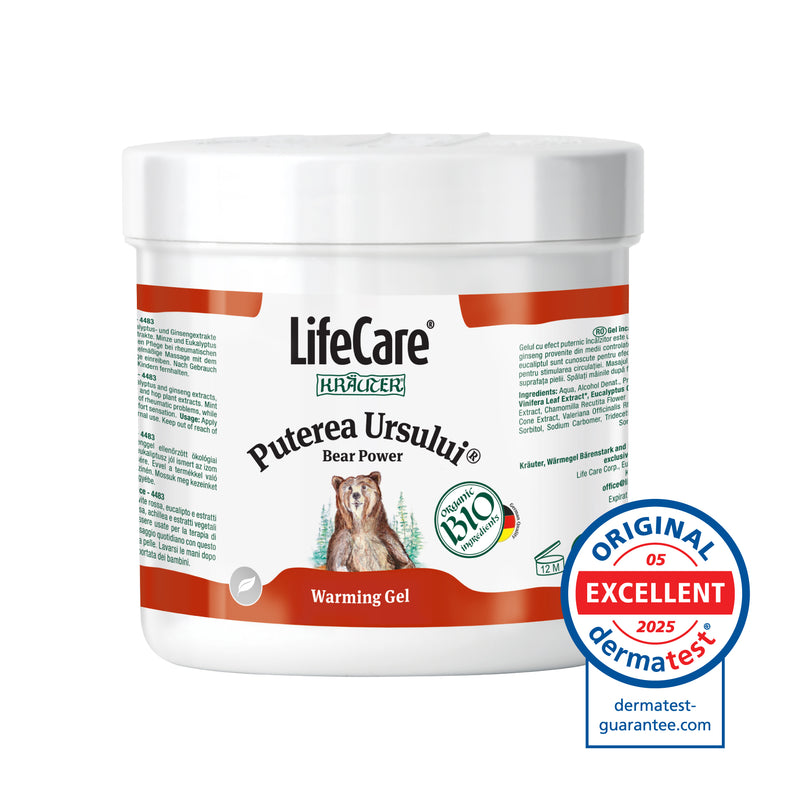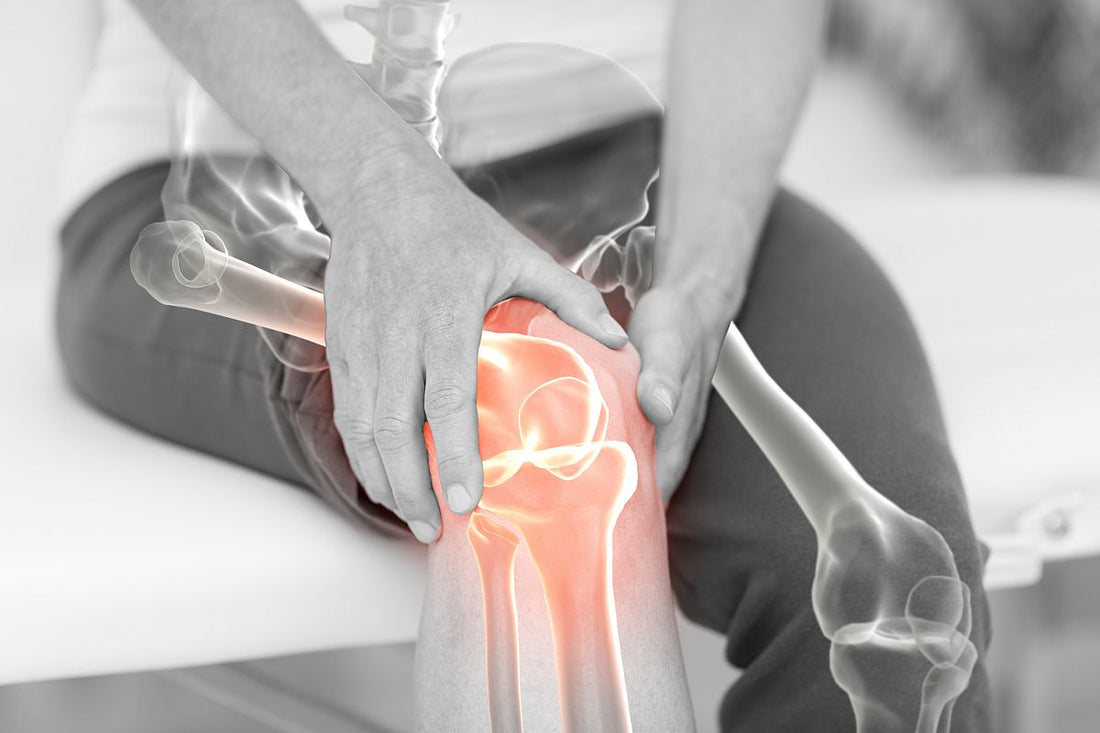Glucosamine and chondroitin are two natural substances that have gained popularity as supplements for joint health. They are commonly used in treatments for osteoarthritis and other joint conditions. It helps to manage joint pain, maintain the flexibility of the joints, being essential for strong bones, healthy joints and increased mobility.
Here's what we will talk about in this article:
1. How were the benefits of glucosamine and chondroitin discovered?
2. Clinical studies related to the efficiency of glucosamine and chondroitin
3. Glucosamine and chondroitin - role, benefits, recommendations
4. How glucosamine and chondroitin acts in the body after administration as a dietary supplement
5. considerations for use of glucosamine and chondroitin
6. Who is it advisable to supplement with glucosamine and chondroitin?
7. How do I choose the best glucosamine and chondroitin?
1. How were the benefits of glucosamine and chondroitin discovered?
The benefits of glucosamine and chondroitin have been discovered through a series of research and clinical studies that have evolved over time. Glucosamine was first discovered in 1876 by researcher Georg Ledderhose, a medical student at Strasbourg University, who isolated this substance from chitina crustaceans.
Subsequently, in the 20th century, the researchers identified the chemical structure of glucosamine, establishing its role in the structure of cartilage and other connective tissues.
In the 1960s, researchers began to study the effects of glucosamine on joint health, using animal models and cell cultures. These studies have shown that glucosamine plays a role in cartilage formation and repair.
In the 1990s, people's clinical trials confirmed that glucosamine can reduce pain and improve joint function in people with osteoarthritis. These studies have shown that glucosamine can contribute to maintaining and regenerating the articular cartilage.
Condroitin was obtained for the first time from Cartilage by Fisher and Boedacker in 1861 and was isolated in a pureer form by Krukenburg in 1884. The understanding of the chemical structure of chondroitin has gradually evolved, being identified as an important component of the extracellular matrix of the cartilage.
In the 1970s and 1980s, research on chondroitin focused on its effects in the laboratory and animal models, showing that it can help protect the cartilage and reduce inflammation.
2. Clinical studies related to the efficiency of glucosamine and chondroitin
The clinical studies carried out in the 1990s confirmed the beneficial effects of chondroitin in the treatment of osteoarthritis, demonstrating that it can reduce the pain and improve the function of the joints. Research has shown that chondroitin contributes to maintaining and repairing the joint cartilage.
After the individual benefits of glucosamine and chondroitin have been established, the researchers began to study the effects of combining the two substances. Studies have shown that combined use can have a synergistic effect, providing additional benefits for joint health.
Therefore, the combination of glucosamine and chondroitin can reduce the symptoms of osteoarthritis more effectively than the substances used individually. This combination helps not only reduce pain, but also to improve joint function and to maintain cartilage.
Research continues to explore the long -term effects of glucosamine and chondroitin, optimizing formulas and doses to maximize joint health benefits.
Discoveries and studies have contributed to the popularization of glucosamine and chondroitin as dietary supplements for joint health. The supplement industry now offers a wide range of products that contain these ingredients.
3. Glucosamine and chondroitin - role, benefits, recommendations
Glucosamine is an aminosaccharide, a type of carbohydrate that plays an essential role in maintaining cartilage health. It is naturally produced in the body and is found in large quantities in cartilages and joint fluids. Glucosamine supplements are often extracted from crustacean carapaces, but there are also synthetic variants.
The benefits of glucosamine
- Improvement of cartilage health: Glucosamine is a crucial component of cartilage and helps maintain its integrity. Dietary supplements with this ingredient can contribute to the regeneration of damaged cartilage and to prevent its degradation.
- Reduction of joint pain: Studies have shown that glucosamine can reduce pain and inflammation in joints affected by osteoarthritis.
- improving mobility: by supporting cartilage health, glucosamine can help improve the mobility and flexibility of the joints, allowing easier and more comfortable movements.
Condroitin is another essential component of cartilage, which helps to attract and retention of water in cartilage, thus ensuring the necessary hydration for optimum operation. Condroitin supplements are usually extracted from animal tissues, such as shark cartilage or cattle.
The benefits of chondroitin
- Hydration of cartilages: chondroitin helps maintain cartilage hydration, which contributes to its elasticity and resistance. It helps the cartilage to withstand pressure and daily wear.
- Reduction of inflammation: chondroitin has anti -inflammatory properties, which can help reduce inflammation in the joints and, implicitly, reduce pain and rigidity.
- Improving the joint function: by supporting the integrity and elasticity of the cartilage, chondroitin can contribute to maintaining an adequate joint function and to improving mobility.
4. How glucosamine and chondroitin acts in the body after administration as a dietary supplement
Understanding how these substances act in the body can provide a clear image of their efficiency and how they contribute to maintaining joint health.
Glucosamine
After administration, glucosamine is absorbed into the gastrointestinal tract and reaches the blood. Once in the blood, it is transported to the tissues of the body, especially to the joints, where it is necessary for maintaining and regenerating the cartilage.
Glucosamine is an important precursor of glycosaminoglycans (GAG), such as chondroitin and hyaluronate, which are essential components of cartilage. These gags contribute to the formation and maintenance of the cartilage structure and function.
Glucosamine helps maintain cartilage integrity by stimulating proteoglycan synthesis, which are large molecules that contribute to the elasticity and hydration of cartilage.
Glucosamine can influence the inflammatory response in the body. By reducing the secretion of enzymes that destroy cartilage (such as matricial metaloprotein), glucosamine can help reduce inflammation and joint pain.
chondroitin
Condroitin is absorbed into the gastrointestinal tract and reaches the blood. After absorption, chondroitin accumulates in connective tissues, including joint cartilages.
There, it helps to attract and retention of water in cartilages, which is essential for maintaining their elasticity and lubrication. It contributes to preventing cartilage damage and maintaining an optimal joint function.
Condroitin helps stimulate the production of proteoglycans and glycosaminoglycan, important components of the cartilage that contribute to its structure and function.
In addition, it also has anti -inflammatory properties, which help reduce inflammation in the joints. By inhibiting the activity of enzymes that degrade cartilage, chondroitin can contribute to reducing pain and joint stiffness.
Condroitin supplementation can have an analgesic effect, reducing the discomfort associated with osteoarthritis and other joint conditions.
Glucosamine and chondroitin act in the body by supporting and regenerating cartilage, reducing inflammation and improving the joint function. Glucosamine contributes to the synthesis of glycosaminoglycans, essential for cartilage structure, while chondroitin helps maintain hydration and elasticity of cartilage.
The combined use of these substances can provide significant benefits in managing joint disorders, such as osteoarthritis. However, it is important to consult a health specialist to adapt supplements to individual needs and to avoid possible adverse effects.
5. considerations for use of glucosamine and chondroitins
Glucosamine and codroitin are often combined in dietary supplements to maximize joint health.
- Dosage: the recommended dosage may vary depending on the product and the individual needs. It is important to follow the manufacturer's recommendations and talk to a doctor before starting any supplements.
- Side effects: usually glucosamine and chondroitin are well tolerated, but mild side effects, such as gastrointestinal disorders, may occur. If you notice severe side effects, interrupt use and consult a doctor.
- Interactions: Glucosamine can interact with certain drugs, including anticoagulants. It is essential to talk to your doctor before combining these supplements with other treatments.
- quality and purity: Choose high quality supplements, from trust producers, to make sure that the products are pure and efficient.
Glucosamine and chondroitin are valuable supplements to support joint health, having complementary roles in maintaining the integrity and cartilage function. The regular use of these supplements can help reduce joint pain, improve mobility and support general joints.
6. To whom is indicated by glucosamine and chondroitin
Glucosamine and chondroitin supplements are often recommended for people with osteoarthritis, a degenerative disease of the joints that cause pain and rigidity.
Although less frequently, some people with rheumatoid arthritis may benefit from these supplements to reduce inflammation and support cartilage health, but it is important to be used under the supervision of a doctor.
Athletes or people who practice intense physical exercises can consider supplements to support the integrity of the joints and reduce the risk of injury.
People who spend a lot of time in a sedentary position can suffer from joint stiffness; Supplements can help maintain joint flexibility.
As we age, the cartilage of joints can undergo natural degeneration. Glucosamine and chondroitin supplements can help maintain joint health and reduce symptoms of osteoarthritis.
From what age are supplements recommend?
Starting at 30-40 years: although glucosamine and chondroitin are often used by older people, and young adults who have symptoms of joint damage or want to prevent joint problems can start to use them.
Over 50 years: supplements are frequently recommended for people over 50, because the risk of osteoarthritis and other joint conditions increases with age.
The use of glucosamine and chondroitin is recommended in the following conditions:
- osteoarthritis
- Damage to cartilage
- joint pain and rigidity
- lesions of the joints and cartilage
- subacromial impingement syndrome
7. How do I choose the best glucosamine and chondroitin?
Choosing a high quality glucosamine and chondroitin supplement is essential to ensure its effectiveness and safety. Here are some key selection criteria that you should consider when choosing the best glucosamine and chondroitin supplements:
Quality of ingredients
Check if glucosamine is derived from quality sources, such as crustaceans (usually chitosan) or vegetable sources (if labeled as vegetarian or vegan).
Make sure that chondroitin comes from high quality sources, usually fish or cattle cartilages. Check if the product uses high quality and tested chondroitin.
Check the product label to make sure it does not contain useless additives, allergens or conservation agents that could affect the efficacy or safety of the supplement.
Dosage and formula
Make sure the product contains adequate doses of glucosamine and chondroitin, according to research and clinical recommendations. Usually, the standard glucosamine dose is 1,500 mg per day, and chondroitin is 1,200 mg per day, divided into multiple doses.
Check the ratio between glucosamine and chondroitin. Products that contain a well -balanced combination of the two components are often considered more efficient.
The reputation and reviews of the brand
Choose supplements from well -known and respected brands in the food supplements industry. Companies with a solid reputation are more likely to offer high quality products. Buy supplements that have been tested and certified by independent organizations, such as TUV Austria.
These certifications guarantee that the product complies with quality and purity standards. Read the reviews of other users to evaluate the effectiveness and safety of the product. Positive reviews and experiences of other users can provide valuable prospects.
The choice of the best glucosamine and chondroitins involves taking into account several factors, including the quality of the ingredients, dosing, quality certifications, brand reputation, supplement shape and cost. By evaluating these criteria, you can select a supplement that offers the desired benefits and fits your individual joint health needs.
Conclusion
Glucosamine and chondroitin are valuable supplements for joint health, having significant benefits for people with joint disorders, athletes and those with risk of joint damage. Their use can start from a young age, depending on the needs, and continue to be relevant during the adult age.
Article written by Andreea Corneanu, specialist marketing, Life who




